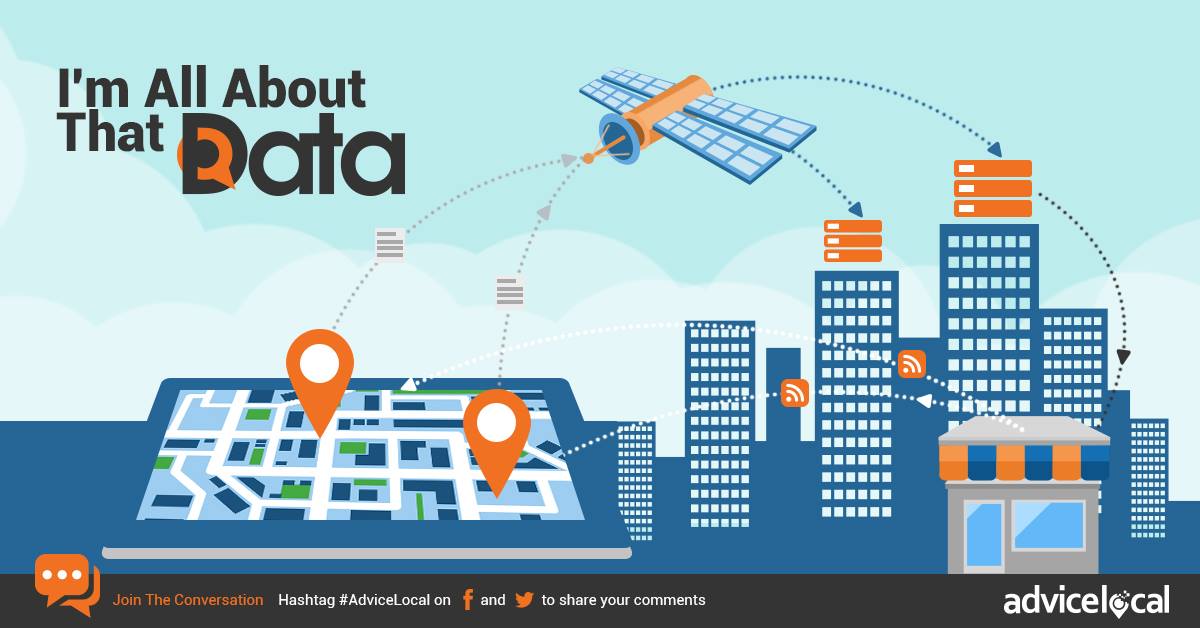Warning: Undefined variable $handle_code in /mnt/wp/advicelocal/public_html/wp-content/plugins/click-to-tweet-by-todaymade/tm-click-to-tweet.php on line 243
Warning: Undefined variable $handle_code in /mnt/wp/advicelocal/public_html/wp-content/plugins/click-to-tweet-by-todaymade/tm-click-to-tweet.php on line 243
When I bring up location data I’m usually referring to consistent NAP data (name, address, phone number) for local businesses and brands across the internet. Helping businesses to be found in local search, especially on mobile, is something I find incredibly exciting.
Today I’m exploring consumer location data and just how this data helps businesses and brands create the best strategies for personalized marketing. This is based on location, accuracy—and understanding the limitations of the technology—to excel in the face of these challenges. (Here is a research paper on the topic compiled by Street Fight Insights.)
This whitepaper published by the data and insights firm PlaceIQ revealed that location data reported by mobile devices is not nearly as accurate as many people assume. It created quite a buzz around the internet, and in this article I will discuss it in more detail.
The report found that the average distance between the actual location of the mobile device and the reported location was around 93 feet. That’s huge! Tests revealed the smallest difference was approximately three feet while the largest was a whopping 669 feet.
Understanding Location Data
This location data tends to be gathered through mobile applications as they constantly collect data on the whereabouts of the device owner. The capture of this location information is helped or hindered by a number of variables and tools, including the device’s built-in GPS and the approximate location provided by the device’s carrier network.
Cell tower triangulation is the fastest (but least accurate) path to pinpointing location. As a device remains in one location it has time to employ more accurate methods to calculate location, such as GPS satellite signals and Wi-Fi hubs. Where applicable, Bluetooth beacons provide excellent location data. Unfortunately this technology is still in the early adoption phase and is not widely used.
The technology behind location data (like GPS) is constantly being updated and refined, but it is still a long way off from being truly accurate. This makes it difficult for local-focused marketers to determine whether someone was in their client’s store, the store next door, or simply driving past the location. Having the most accurate information is vital, as it determines whether or not to target a particular consumer. If the person did not in fact visit the store, those marketing efforts are just more noise in their always-on, ever-connected world.
A Clear Look at Proximity
If someone is in a large square or an open space with an unobstructed view of the sky, their GPS location data will be more accurate.
The same holds true if that square is surrounded by Wi-Fi hubs, as a device can ping these to get a solid signal.
However, pinpointing consumer location in a place like Downtown Manhattan, with all its high-rise buildings, makes getting an accurate GPS or Wi-Fi signal difficult. PlaceIQ found a location discrepancy of 287 feet even in the Big Apple!
Given enough time and just the right environmental density, data synchronizes and becomes quite accurate. Therefore, when a customer is in a building long enough, the location data will be verifiably accurate.
Marketing with Location Data
Consumers are heavily engaged on mobile, from online shopping through both web and branded apps, to keeping up with friends & family on social networks and checking work emails. All of these activities provide location data which is tracked and served up to third parties.
The vast amount of consumer intelligence captured ranges from the restaurants and stores frequented to the places they live and work. In fact, location-based marketing comes in various forms.
Location-Based Targeting
Just like it sounds, Location-Based Targeting targets advertising based on the consumer’s location. For example, a retailer might provide exclusive in-store promotions to someone identified as a frequent visitor when that person is within a particular range of that location.
Real-World Attribution
Real-World Attribution is now a tangible goal, thanks to location-based data that is able to provide proof of results. In the mobile-first world, the online activities of consumers can be correlated with their offline pursuits. Online marketing strategies can be successfully implemented from following ad clicks through POS transactions.
Advanced Personalization
Advanced Personalization provides the opportunity to reach out to exactly the right people at the right times. For example, a travel agency might offer customized promotions based on the travel patterns and habits of a particular consumer.
Hitting that mythical 1:1 targeting ratio is not exactly real-world yet, but with stellar location data, mixed along with likes and preferences, we’re closer than ever. Having accurate maps layered with the right amount of additional consumer intelligence can greatly improve the local marketing strategies implemented to help clients.
Mobile continues to provide us with all the information needed to build a better future, sending the right messages to the right people in their particular micro-moments. Download our research paper on micro-moments and get started today.
Be sure to come back next week. I’ll most likely be talking about mobile and local.




